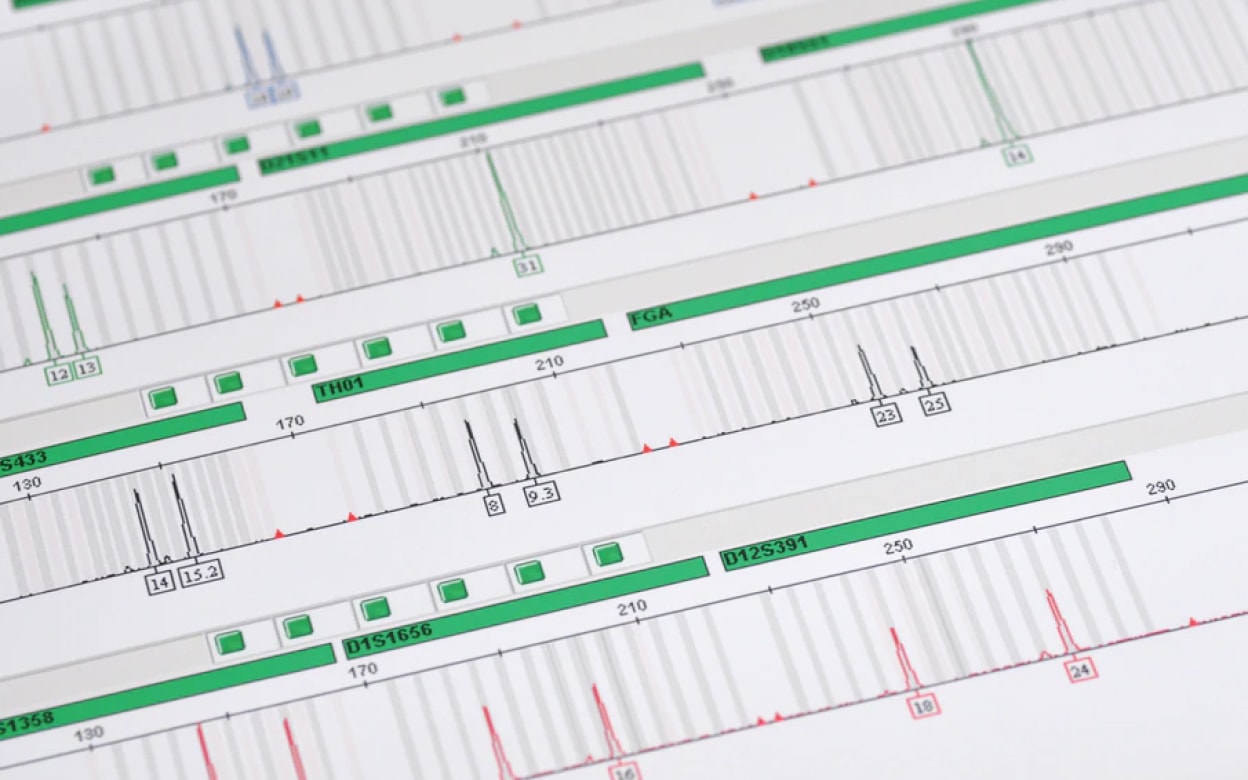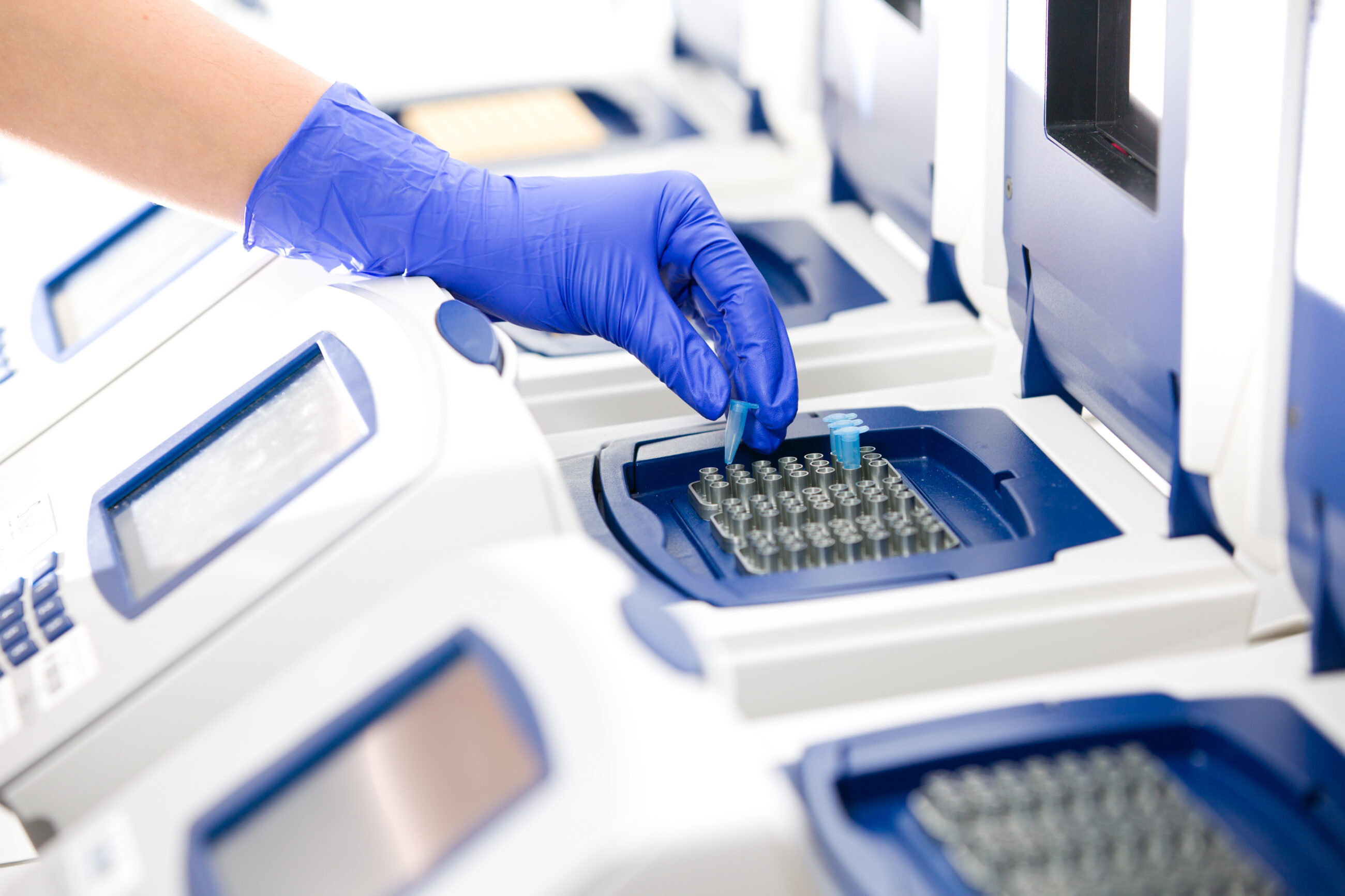
Understanding Paternity Test Results
Due to the science behind DNA parentage testing, the results must be worded in a certain way that can be confusing. The following information will help you understand it better.
What is DNA?
DNA makes you who you are by telling your body how to develop and function. Half your DNA comes from your mother and the other half comes from your father.
The DNA that we test at Identilab is highly variable between people, meaning that it is extremely unlikely that two individuals will have the same DNA profile (except for identical twins). By understanding how DNA is passed down from generation to generation, we can compare DNA profiles from two or more people to see if a particular genetic relationship is likely.
How does a parentage test work?
A paternity test determines whether a man is the biological father of a child while a maternity test determines whether a woman is the biological mother of a child. Identilab looks at 23 DNA markers. Each person tested will have two different variants (alleles) at each of these markers, which are identified by a number. We compare the DNA profiles to each other to see if one of the child’s allele numbers matches up with an allele number from the alleged parent at every DNA marker.
What do the results mean?
Your report will detail whether your sample is legally admissible and has been collected and tested as per the Family Law Regulations 1984 (Cth) and the requirements of NATA accreditation, or if the results are for peace-of-mind purposes only.
The Alleged Father is not Excluded
If your report says: “ALLEGED PARENT’S NAME is not excluded from identification as the father/mother of CHILD’S NAME” this means that a comparison of the DNA profiles shows that the child’s allele numbers do match the numbers of the alleged parent at every tested DNA marker, and the results are in support of the tested person being the biological parent of the child.
Because we have not tested the entire genetic code of everyone on the planet, DNA testing cannot prove that a person is the biological parent with 100% certainty. Instead, two statistics are given which, if over certain values, allow us to confidently reach a conclusion about parentage. To be considered the child’s parent, the first number that is quoted (called the Combined Paternity Index) must be greater than 1,000 and the second number (called the Probability of Paternity) must be greater than 99.9%.
For example, “Joe Bloggs is 59 million times more likely to produce a child with the required alleles than a man drawn randomly from the Australian Caucasian population. This equates to a Relative Chance of Paternity of 99.9999983%.”
Your report also includes a table showing the DNA markers tested and the alleles for each person tested. In the example below, you can see that the child has a match at each of the DNA markers with the alleged father (highlighted in red).
| DNA Marker | Child | Alleged Father |
| D3S1358 | 16,17 | 14,16 |
| vWA | 15,17 | 14,17 |
| D16S539 | 9,10 | 10,10 |
Excluded
If your report says: “ALLEGED PARENT’S NAME is excluded from identification as the father/mother of CHILD’S NAME” this means that a comparison of the DNA profiles shows that the child’s allele numbers do not match the numbers of the alleged parent at every tested DNA marker. That is, the results show that the tested person is not the biological parent of the child. Because a child gets half its DNA from their father and the other half from their mother, there must be a match at all the DNA markers for the tested person to be considered the biological parent. Your report will tell you how many of the markers do not match between alleged parent and child.
Your report also includes a table showing the DNA markers tested and the alleles for each person tested. In the example below, you can see that the child has no match at two of the DNA markers with the alleged father. The child does match one of the markers of the alleged father (highlighted in red), but this is by coincidence, just like two unrelated people might have blue eyes or brown hair.
| DNA Marker | Child | Alleged Father |
| D3S1358 | 16,17 | 14,15 |
| vWA | 15,17 | 14,17 |
| D16S539 | 9,11 | 10,10 |
Before releasing a report that excludes a biological relationship, Identilab confirms the results by processing the samples twice. This ensures that the possibility of human error in the laboratory is eliminated and that you receive accurate results.
What if my report mentions a mutation?
On occasion we will find that a child and an alleged parent match at each DNA marker except for one or two. We then decide whether this is a true mismatch because the tested person is not the biological parent, or if the child has inherited a mutation. Mutations can be thought of as genetic typos that change the allele number seen at a DNA marker resulting in an inconsistency between the alleged parent and child.
If we have seen a mutation in your results, your report will have a comment that says: “An apparent mutation was observed in CHILD at one genetic marker (GENETIC MARKER – indicated in the results table with an asterisk) resulting in a single mismatch between child and putative parent. An appropriate mutation rate calculation has been performed and incorporated into the combined paternity index.”
The presence of a mutation is not a cause for concern and usually has no effect on that person.
If you still have questions regarding your test report, we are always happy to answer them! Please don’t hesitate to call us on 1300 114 294 or email us at [email protected].
















